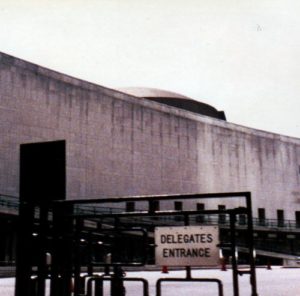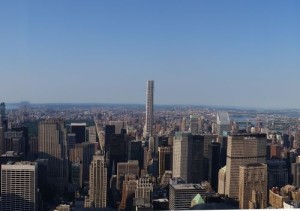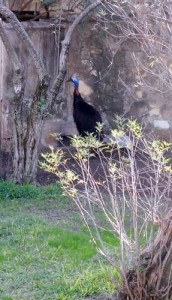I don’t know when I’m going to get the reading done for this post, but I’m going to get started writing it up anyhow. Hopefully I’ll get the reading done on June 28 or 29 and get this knocked out by the end of the month. I may also get a start on the July 13 post, which will probably be another San Antonio city park, between now and then, as well.
The day after this goes live, by the way, Alex and I are leaving for our Salt Lake City/Yellowstone trip. Assuming that the flight is uneventful, we’ll be landing pretty early in the day, getting our luggage and our rental car, and heading off to Pando, the most massive single organism in the world.
July 6 – I was sort of close. I got part of the reading done in very early July but then stalled. I intended to finish up the second article while waiting for a doctor for some jaw pain I’ve been having lately. I got right in to see the doctor and got right back out again. It’s now July 6 and I’m just now starting on the writing.
Waste Not, Want Not, by Elizabeth Royte, photographs by Brian Finke
First, the meaning of the term “want” had moved from “the lack of” to “a desire for” by such an extent by my own childhood, that it took me a very long time to figure out that “waste not, want not” didn’t mean “if you don’t waste it, you won’t want it.”
Second, this article returns us to the Future of Food series for the first time since I’m-not-sure-when. It’s been so long that the “future of food” tag doesn’t even show up on my widget.
Now, onward.
A shocking amount of food is wasted in the world. Some of it is food that was purchased in grocery stores or restaurants and went uneaten, but a lot of it is actually disposed of at the site where it is grown. Sometimes it comes out malformed and the buyers, either the shoppers themselves or the buyers who work for the retail industry. Sometimes there is actually something wrong with the produce, such as a fungal infection or an infestation by parasites.
We follow Tristram Stuart as he puts together meals from discarded food. We see him buying crookneck squash that took their name just a little too seriously, for example. These squash become part of a squash tempura, turnip dumpling, and zucchini noodle meal.
In this article, we go on to France, Kenya, Peru, and back to the United States (Las Vegas, this time) to see what Stuart, and others, are doing to use unsalable food.
The Cold Rush, by Joel K. Bourne, Jr., photographs by Evgenia Arbugaeva
With the increasing warming of the Arctic region, several countries, including Canada, Norway, and Russia are attempting to harvest the natural resources that are coming closer to (and sometimes actually reaching) the surface. Norway is drilling for oil in the Arctic Circle, and Canada is mining gold and iron. Additionally, some ships (including a cruise ship) are taking advantage of the melting ice to take the proverbial “Northwest Passage” from Europe to Asia through northern Canada.
It’s not all rosy, though. The Arctic Circle is so remote that workers need to be brought in in groups, the workers then live in those groups for weeks or months, and then they get shipped home. Also, ecological damage is being done. There are no oil pipelines that far north, so the oil has to be dumped into tankers, which leads to the risk of an oil spill. And, of course, mining always leads to damage.
The Azolla Event, which is the proliferation of azolla fern that led our carbon-rich atmosphere to go into an ice age, locked up more carbon than just the carbon in the fern. Some carbon dioxide was dissolved in the water and once the water froze, the carbon that was dissolved in it was trapped. Cold Rush points out that the melting ice is releasing further carbon into the atmosphere.





